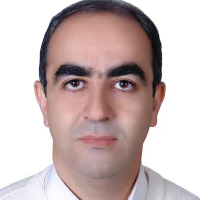Comparison of the Efficacy of Buprenorphine and Clonidine in Detoxification of Opioid-Dependents
Author(s):
Abstract:
Background
Since the number of drug users is increasing, applying a method of detoxification with fewer side effects during withdrawal from opioids and greater reliability seems to be necessary. In addition, without maintenance treatment, there will be limited success of treatment. This study aimed to compare success rates of detoxification with sublingual buprenorphine and clonidine and to evaluate addiction relapse in patients using naltrexone in a six-month follow-up. Methods
This double-blind trial was carried out on opioid dependent patients in a psychiatric hospital in Kerman (Iran) during 2007-09. The subjects were randomly selected from individuals who had referred for detoxification. They were allocated to two groups to receive either clonidine (n = 21) or buprenorphine (n = 14). The success rates of the two methods were assessed at the end of the course and patients were discharged while prescribed with 25 mg daily use of naltrexone. They were followed up for six months and the continuous use of naltrexone and relapse of substance abuse were evaluated. Findings
A total number of 35 patients entered the study. Success of detoxification with naltrexone was confirmed in all cases. One person (8.4%) in the clonidine group and no patient in the buprenorphine group had a Clinical Opiate Withdrawal Scale (COWS) score of more than 12 (P > 0.05). The mean levels of objective signs and subjective symptoms of withdrawal and the desire for drug abuse had significant reductions during detoxification period in both groups (P < 0.001). However, the difference in these variables between the two groups was not statistically significant (P > 0.05). Naltrexone was used for an average of one month in 43% and 64% of subjects in the clonidine and buprenorphine groups, respectively. In addition, 62% of patients in the clonidine group and 92.8% of subjects in the buprenorphine group received maintenance treatment. Nevertheless, the mean number of days staying in treatment was not significantly difference between the two groups (P > 0.05). Conclusion
Buprenorphine is as effective as clonidine in controlling withdrawal symptoms. A greater percentage of patients detoxified by buprenorphine received maintenance treatment, but there was not a significant difference in relapse rates between the two methods.Keywords:
Language:
English
Published:
Addiction & Health, Volume:4 Issue: 3, Summer-Autumn 2012
Page:
79
magiran.com/p1090174
دانلود و مطالعه متن این مقاله با یکی از روشهای زیر امکان پذیر است:
اشتراک شخصی
با عضویت و پرداخت آنلاین حق اشتراک یکساله به مبلغ 1,390,000ريال میتوانید 70 عنوان مطلب دانلود کنید!
اشتراک سازمانی
به کتابخانه دانشگاه یا محل کار خود پیشنهاد کنید تا اشتراک سازمانی این پایگاه را برای دسترسی نامحدود همه کاربران به متن مطالب تهیه نمایند!
توجه!
- حق عضویت دریافتی صرف حمایت از نشریات عضو و نگهداری، تکمیل و توسعه مگیران میشود.
- پرداخت حق اشتراک و دانلود مقالات اجازه بازنشر آن در سایر رسانههای چاپی و دیجیتال را به کاربر نمیدهد.
In order to view content subscription is required
Personal subscription
Subscribe magiran.com for 70 € euros via PayPal and download 70 articles during a year.
Organization subscription
Please contact us to subscribe your university or library for unlimited access!


